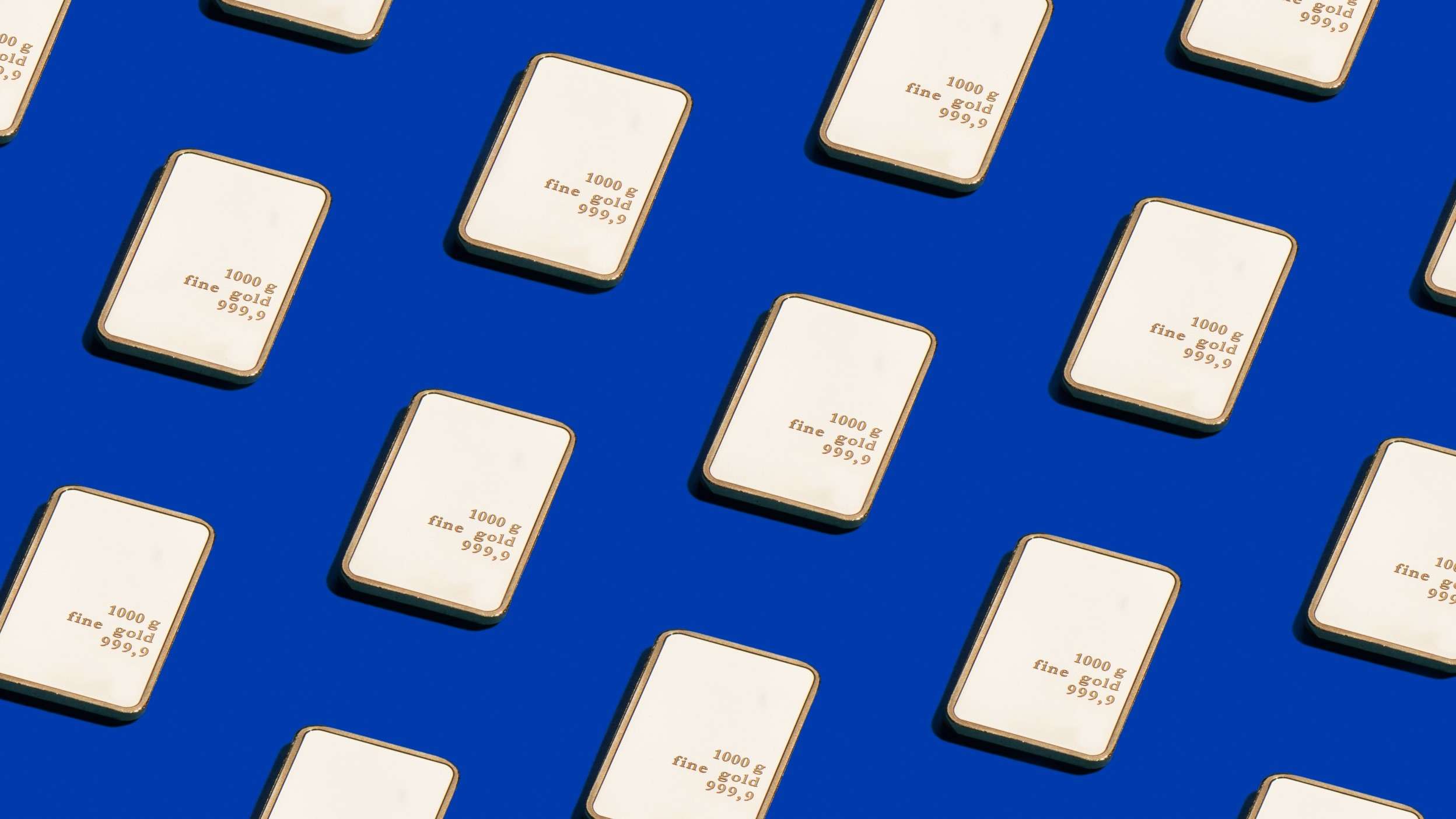
Alternatives Commodity ETFs
Commodities can play several roles in a portfolio with the potential for diversification, inflation hedging and growth opportunities.

If you’ve watched Trading Places, you’ll recall the Dukes’ somewhat rudimentary depiction of the world of commodities and their role as brokers, as well as the sometimes frantic activity in the trading pits. In the 40 years since the movie’s release, most “open outcry” trading pits have been replaced by more efficient electronic trading systems, and additional safeguards and regulations have been introduced. Here, we explore the commodity asset class and its role in investor portfolios.
Using the Bloomberg Commodity Index (“BCOM”) as a proxy, commodities can be grouped broadly into energy, metals and agriculture commodities, but also can be split into the following sub-sectors.
| Broad sector | Energy | Metals | Agriculture | ||||
|---|---|---|---|---|---|---|---|
| Sub sector | Primary | Distillates | Precious | Industrial | Grains | Livestock | Softs |
| Futures exchange traded | NYMEX ICE |
NYMEX | COMEX | LME | CBOT | CME | ICE |
For illustrative purposes
Some commodities are still bought and sold in a traditional, physical transaction, but most trading now takes place on the futures exchanges and over-the-counter market. The Chicago Board of Trade (CBOT) was created in 1848 as a cash market for grain farmers looking for potential buyers. In 1865, the CBOT introduced the standardised futures contracts that we know today, making transactions more efficient and opening the door to other participants.
There are now futures exchanges in financial hubs across the world, but the most relevant for most investors are the CBOT, Chicago Mercantile Exchange (CME), New York Mercantile Exchange (NYMEX), Commodity Exchange (COMEX), Intercontinental Exchange (ICE) and London Metal Exchange (LME). A commodity’s futures tend to trade on just one exchange.
The standardisation aspect is vitally important. A futures contract has precise specifications, including the quantity and quality of the commodity to be delivered, as well as the expiration and delivery dates. Each commodity future will have specified contract months that can be traded.
Units per contract |
5,000 bushels |
|---|---|
Price quotation |
Cents per bushel |
Min price movement |
¼ cent per bushel (one tick = $12.50 per futures contract) |
Trading hours |
Monday – Friday 8:30am – 1:20pm (out-of-hour trading also available) |
Settlement method |
Deliverable |
Termination of trading |
On the business day prior to the 15th day of the contract month |
Last delivery date |
Second business day following last trading day of the delivery month |
Grade and quality |
#2 Yellow corn at contract price #1 Yellow corn at a 1.5 cent/bushel premium #3 Yellow corn at a 2-4 cent/bushel discount depending on broken corn and other damaging factors |
Source: Chicago Board of Trade, August 2023
The most actively traded contracts tend to be those for the nearest delivery month (the “front month”). Futures trades are cleared centrally, and margins are paid by the clearing members. Today, futures are traded not only by those interested in the physical commodity but also by investors who want exposure to the commodity’s price but do not want to ever take physical delivery.
While you could buy and hold some commodities physically, it is costly and extremely inefficient when you factor in transportation, storage and insurance costs. You would also have to locate someone willing to sell you the commodity and negotiate a price and delivery terms with them.
If you don’t want to hold the physical commodities (most people don’t) but instead simply want exposure to their prices, futures may be a better alternative. You’ll need to remember to close out your long futures position or roll it into another month’s contract before it expires, unless you want someone showing up at your front door to deliver a lorry-full of the commodity. Futures can be cost-effective because you only need to put up a fraction of the contract value, called margin. You may be required to top it up whenever the futures price goes down – known as a margin call.
However, the most popular way most investors gain exposure to commodities is through exchange-traded products. You can gain exposure to a single commodity’s price via an exchange-traded commodity (ETC) or to a basket of commodities, such as those represented by the BCOM Index, via an ETF. Investing in these types of products provide simple, cost-efficient exposure without having to worry about receiving margin calls, rolling the futures or having a lorry turn up at your front door.
Commodities can provide investors with three potential benefits:
Diversification. As an asset class, commodities show low correlation with equities and bonds, which is particularly useful for achieving portfolio diversification. Individual commodities may be driven by a wide range of factors including politics, regulations, weather, seasonality, the economy, replacement, supply and demand, which are different from those impacting equity and bond prices. How much should be allocated to commodities depends on the composition of the existing portfolio, but studies suggest 5-10% may make a meaningful improvement to the typical risk-return profile.
| BCOM | Gold | MSCI World | S&P 500 | Global Agg | USD HY | USD IG | US Treasuries | |
|---|---|---|---|---|---|---|---|---|
| BCOM | 1.00 | |||||||
| Gold | 0.32 | 1.00 | ||||||
| MSCI World | 0.42 | 0.12 | 1.00 | |||||
| S&P 500 | 0.31 | 0.02 | 0.91 | 1.00 | ||||
| Global Agg | 0.15 | 0.42 | 0.12 | -0.03 | 1.00 | |||
| USD HY | 0.28 | 0.07 | 0.55 | 0.40 | 0.19 | 1.00 | ||
| USD IG | -0.07 | 0.12 | -0.04 | -0.10 | 0.60 | 0.32 | 1.00 | |
| US Treasuries | -0.16 | 0.12 | -0.27 | -0.28 | 0.59 | -0.04 | 0.87 | 1.00 |
Source: Bloomberg, as at 31 October 2024. Correlation of daily returns between 31 October 2004 and 31 October 2024.
Inflation hedge. Commodities tend to be positively correlated to inflation, with rising commodity prices often a contributing factor in higher inflation readings. We have witnessed this in recent years with rising energy and food prices stoking multi-decade highs in inflation around the globe.
For illustrative purposes only. Source: Bloomberg, ICE, Invesco, as at 31 October 2024 based on calendar year data, 1978-2024 (except Global Agg which uses 1990-2024). “Core CPI” refers to US core inflation. All asset returns are core CPI-adjusted and are in total return format, unless stated otherwise: Cash uses the ICE BofA US 3-month Treasury Bill index, US Treasuries uses the Bloomberg US Treasury Index, Global Agg uses the Bloomberg Global Agg Index, USD investment Grade Credit uses the Bloomberg US Corporate Bond Index, Commodities uses the S&P GSCI Total Return Index and Gold spot price per ounce. For illustrative purposes only.
Commodities also provide potential growth opportunities linked, for example, to emerging market growth or the transition to a low-carbon global economy. Demand for industrial metals would be expected to grow as an expansive economy spends on building out infrastructure, housing, etc, while many of these materials are also used in solar, wind and other renewable energy technologies. In agriculture, some grains – especially corn – are used not only to feed the world but also to feed into the production of biofuel. These are just some of the potential growth opportunities you can access via an investment in commodities.
Watch this video from Kathy Kriskey, Senior Commodity Strategist at Invesco, as she discusses the main benefits of investing in commodities, including what they may offer for today’s portfolios.

Gold slipped 0.7% lower in December, after the Fed reduced its forecast for interest rate cuts in 2025, leading to a stronger US Dollar and higher bond yields, negatively impacting the metal. Discover insights into the key macro events and what we think you should be keeping your eyes on in the near term.

European ETFs raised $68.6 billion in the third quarter, the strongest quarter ever recorded in the EMEA ETF industry in terms of net new assets and taking YTD NNA to $175.2 billion. A combination of robust flows and market performance gains of 7.1%, boosted AUM for the EMEA ETF industry by 10.5% during this quarter, up to $2.3 trillion.

Find out how commodities performed in July, with insights into the key macro events and what we think you should be keeping an eye on in the near term with our latest commodities update.
For complete information on risks, refer to the legal documents.
The value of investments, and any income from them, will fluctuate. This may partly be the result of changes in exchange rates. Investors may not get back the full amount invested.
Instruments providing exposure to commodities are generally considered to be high risk which means there is a greater risk of large fluctuations in the value of the instrument.
This is marketing material and not financial advice. It is not intended as a recommendation to buy or sell any particular asset class, security or strategy. Regulatory requirements that require impartiality of investment/investment strategy recommendations are therefore not applicable nor are any prohibitions to trade before publication.
Data as at 31 October 2024 unless otherwise stated.
Views and opinions are based on current market conditions and are subject to change.
EMEA3997319